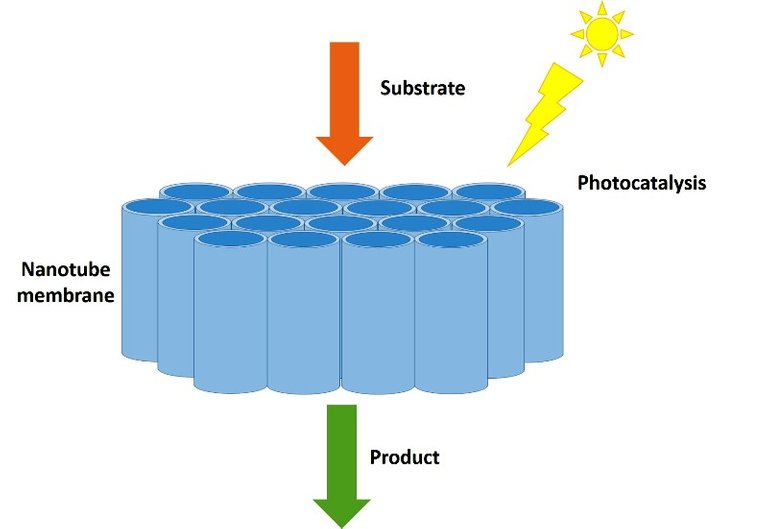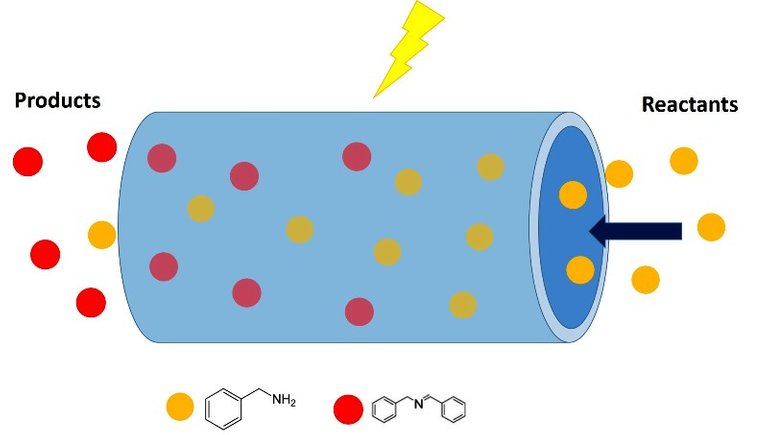Water treatment in a fraction of second
We know that water scarcity is a growing problem; between climate change, population growth and pollution of water sources, in the coming decades this could be a major problem for future populations unless action is taken now.

Discharge of wastewater into a body of water. Source: Wikipedia.com.
The use of alternative water sources, such as treated wastewater, are emerging as potential options to meet some of the population's needs, but there has always been a latent concern about the safety of water obtained in this way, since this type of water is associated with biological and chemical contaminants, among which certain priority chemical contaminants are of particular concern, as they are capable of affecting aquatic life and human health, even at low concentrations. This is why the development of new technologies for water treatment is urgent, in order to meet the quality requirements for water reuse and to avoid environmental deterioration.
In this context, nanotechnology seems to provide potential solutions, with techniques such as membrane filtration and the use of nanoparticles in catalysis. And with respect to the latter, researchers at the Max Planck Institute appear to have achieved a breakthrough, developing a membrane composed of nanotubes that they used as a nanoreactor to convert water contaminated with organic compounds into clarified water in fractions of seconds, using sunlight as a catalyst. The results of the research were recently published in the journal ACS Nano.
The developed system consists of a membrane composed of millions of carbon nitride nanotubes arranged in parallel, each of these nanometer-scale tubes, which have a pore diameter of 40 nm, act as spatially isolated nanoreactors where the reactants are in contact with the catalyst for less than 65 ms. Despite the thickness, water flows through them without problems, and a photocatalytic process uses light to drive the chemical transformation of the contaminated water into clear water.

Schematic of the process of nanoconfined photocatalysis of contaminated water. Source: @emiliomoron.
The concave surface of these parallel nanotubes serves as a kind of mirror that concentrates the internal electric field and combined with the light source, which could even come from outside, serves to dramatically increase the reaction rate. According to the researchers, this concave surface produces an internal electric field induced by the polar surface of the carbon nitride inside the nanotube, which has multiple positive effects on the performance of the material when assembled on the membrane, such as polarizing the reactant molecules and extending the lifetime of the photogenerated charge carriers.
To evaluate the effect of confinement on water clarification, the oxidation of benzylamine, an organic compound of formula C7H9N widely used in organic synthesis, was examined; in this, the confined reaction showed a better yield compared to the corresponding bulk reaction. Benzylamines substituted on the aromatic ring were also evaluated, achieving yields of up to 18%. This set of experiments demonstrated the usefulness of the carbon nitride membrane in photoreductive organic transformations.

Schematic representation of the flow that occurs in carbon nitride nanotubes. Source: @emiliomoron.
The research demonstrated that the near one-dimensional carbon nitride-nitride nanotube membrane can be employed as a photocatalytic nanoreactor for confined organic conversions. This membrane showed excellent performance in the degradation of benzylamines, with a rate of 2308 ± 145 molecules s-1. Thus, the highly confined environment of this nanoreactor leads to significant changes in the conversion process of the evaluated organic compounds, compared to what would be observed in batch systems, providing enhanced catalytic activity.
Undoubtedly, this type of work shows an encouraging outlook for the use of nanotechnology in the treatment of wastewater contaminated with organic compounds. Let us hope that research in this field will continue and that improvements can be made in the filtration systems conventionally used, incorporating this type of nanotube membranes, and that they can be used in large-scale treatment systems.
Thanks for coming by to read friends, I hope you liked the information. See you next time.
Hi dear @emiliomoron
Excellent article.
Let us hope that this research can end with positive results and the implementation of this system can be incorporated into conventional water processing methods.
Thank you for sharing.
Happy weekend.
Regards.
Greetings friend @janettyanez, thanks for reading. Let us hope that yes, this treatment system can be successfully scaled up to be implemented on a large scale and incorporated into the treatment systems currently in use.
Really good article and content. We do need good mechanism to treat our water and this looks promising.
Thanks friend, we certainly need urgent solutions adapted to the reality of current pollutants.
Very interesting information presented on such a critical problem as water for human use.
Undoubtedly, research and alternatives to treat contaminated water are important in order to reduce the impact of the scarcity of this vital liquid for life on the planet.
Thank you for sharing.
That is right my friend, this is a critical problem that we must address now, and this research has the potential to provide us with technological solutions that will minimize the impact of water pollution.